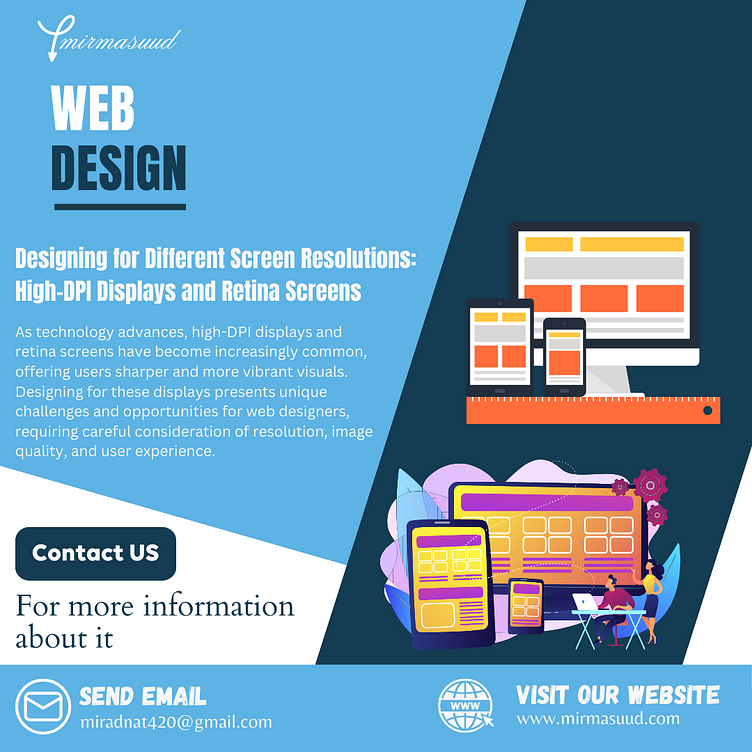Designing for Different Screen Resolutions
Designing for Different Screen Resolutions: High-DPI Displays and Retina Screens As technology advances, high-DPI displays and retina screens have become increasingly common, offering users sharper and more vibrant visuals. Designing for these displays presents unique challenges and opportunities for web designers, requiring careful consideration of resolution, image quality, and user experience. High-DPI displays, such as those found in smartphones, tablets, and high-resolution monitors, pack more pixels per inch (PPI) compared to standard displays. To ensure optimal viewing experiences on these screens, designers must create graphics and interface elements with higher pixel densities, known as "retina" or "high-DPI" versions. When designing for high-DPI displays, using scalable vector graphics (SVGs) and high-resolution images is crucial to maintain clarity and sharpness across different screen sizes. Additionally, optimizing image compression and employing responsive design techniques help ensure fast loading times and smooth performance on all devices. Furthermore, designers should pay attention to typography, ensuring text remains legible and crisp on high-resolution screens. Choosing web fonts with built-in support for high-DPI displays and adjusting font sizes and weights accordingly contribute to a seamless reading experience. In conclusion, designing for high-DPI displays and retina screens requires a meticulous approach to resolution, image optimization, and typography. By embracing scalable graphics, responsive design principles, and high-quality imagery, designers can deliver visually stunning and immersive experiences that captivate users across various devices and screen resolutions.
